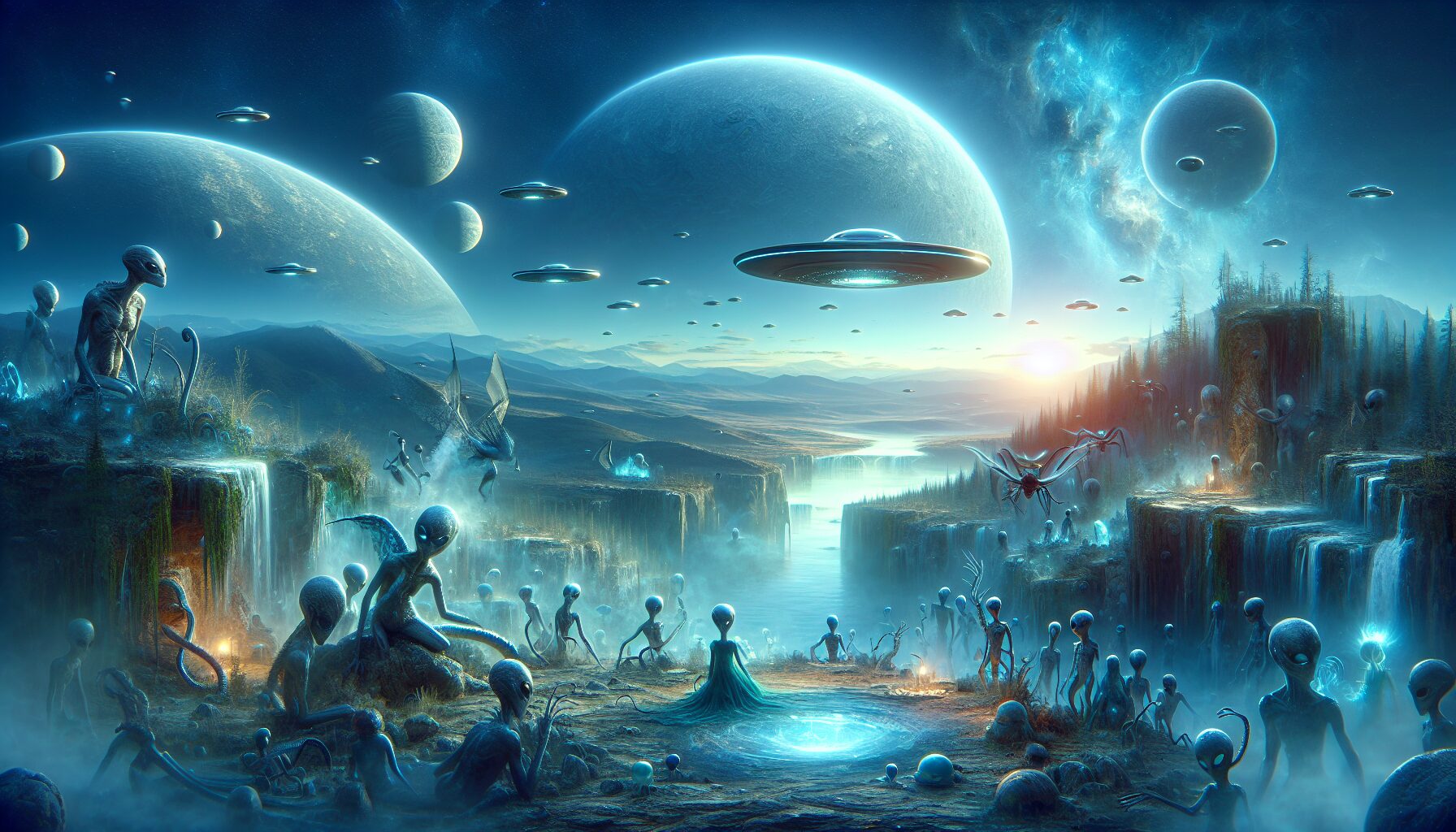The concept of extraterrestrial life, or aliens, has captured human imagination for centuries, woven intricately into the fabric of various cultures. These myths and legends reflect humanity’s eternal curiosity about the cosmos and our place within it. The portrayal of aliens has evolved over time, fueled by advances in scientific understanding and spurred by the creativity inherent in storytelling. This article delves into the rich tapestry of extraterrestrial myths across cultures and their impact on cultural memory.
The Earliest Imaginations: Ancient Myths and Celestial Beings
Long before the advent of modern science, ancient civilizations gazed at the night sky with wonder, interpreting celestial phenomena through the lens of mythology. Many of these myths include references to non-human entities often equated with extraterrestrial beings today.
- Mesopotamian Legends: The Sumerians, who thrived in the Third Millennium BCE, left behind a pantheon of gods including Enki and Anu, associated with heavenly bodies. Some interpretations suggest that these gods were depicted as descending from the heavens, perhaps suggesting an early form of extraterrestrial genesis.
- Hindu Epics: Texts like the Mahabharata mention flying machines called Vimanas, which some theorists controversially link to ancient encounters with advanced extraterrestrial technology.
- South American Cultures: The Nazca Lines of Peru, created by the Nazca civilization, are massive geoglyphs that some believe to be messages or signals to skyward visitors. These interpretations, while not accepted by mainstream archaeology, demonstrate the speculation surrounding alien influence.
Medieval and Early Modern Tales
The Middle Ages and the Renaissance period saw a transformative shift in how humanity viewed the heavens, transitioning from mythological interpretations to nascent scientific inquiry. This era, however, was still rich with tales of celestial visitors.
- European Folklore: Some folktales describe encounters with magical beings from “other worlds,” akin to later descriptions of extraterrestrial beings.
- Celtic Myths: The Tuatha Dé Danann, a supernatural race in Irish mythology, are said to have arrived in ships and possessed immense knowledge and powers that some have compared to alien intelligence.
- The Cheshire Manuscript: In this English document, dated to the 13th century, there are anecdotes of mysterious airships, hinting at a cultural memory touched by celestial curiosity.
Modern Interpretation: Aliens in Literature and Media
The narrative of extraterrestrial life gained significant momentum in the 19th and 20th centuries, primarily through fiction and later through the burgeoning medium of television and cinema.
- War of the Worlds by H.G. Wells: Published in 1897, this novel was pivotal in popularizing the idea of hostile alien visitors. It sparked imaginations and fears about the potential reality of alien contact.
- The Day the Earth Stood Still: This 1951 film introduced audiences to the benevolent alien, Klaatu, who came to Earth with a warning, helping to establish the trope of the enlightened extraterrestrial visitor.
- Modern Streaming and Cinema: Contemporary series like The X-Files and blockbuster films like Independence Day continue to explore these themes, feeding into the enduring fascination with alien life.
Extraterrestrial Influence in Modern Beliefs and Conspiracies
As technology advanced, so too did beliefs in extraterrestrial visitation, often veering into the realm of conspiracy theories and pseudoarchaeology.
- Area 51 and Roswell: Perhaps no location is more synonymous with alien conspiracies than Area 51. The 1947 Roswell incident, often cited as evidence of government concealment of alien technology, plays a critical role in alien lore in the cultural memory.
- Ancient Aliens Theory: Popularized by authors like Erich von Däniken in his book Chariots of the Gods?, this theory suggests that extraterrestrial beings have been visiting Earth for millennia, influencing ancient civilizations.
- Cultural Phenomena: Movements such as the Raëlian religion incorporate beliefs about extraterrestrial origins, highlighting how these concepts permeate even spiritual ideologies.
“We choose to examine alien myths not merely as products of human fantasy, but as tokens of our profound quest to find meaning in the universe.” — Dr. Carl Sagan
The Cultural Significance of Extraterrestrial Myths
Extraterrestrial myths serve several purposes in human culture. They act as metaphors for the unknown, helping societies to confront existential questions about existence and the cosmos. Moreover, they reflect societal concerns at various historical junctures, whether fears of invasion or desires for utopian benefactors.
The prevalence of alien myths also demonstrates humanity’s timeless drive to explore and the deep-seated need for understanding that propels scientific inquiry. These narratives enable cross-cultural dialogues, offering shared frameworks for contemplating life beyond Earth.
Conclusion: From Ancient Stars to Modern Skies
The rich heritage of extraterrestrial myths is testament to humanity’s enduring speculation about what lies beyond our world. Whether interpreted as gods, fictional invaders, or speculative science, these myths continue to influence cultural memory and inspire new generations of dreamers and thinkers.
As we stand on the precipice of interstellar exploration, the stories, myths, and legends of extraterrestrial beings remind us of both our humble beginnings under star-filled skies and the exhilarating possibilities of the universe yet to be explored.
For further reading, visit the Encyclopedia Britannica’s section on alien myths in world cultures.

Comments